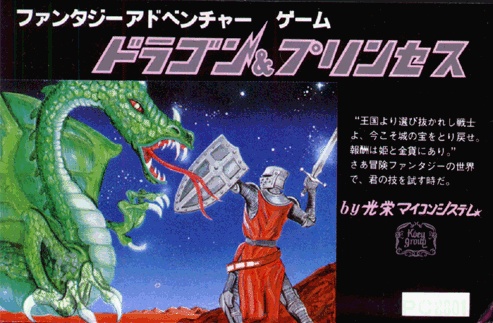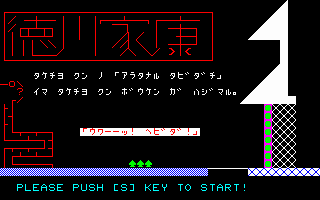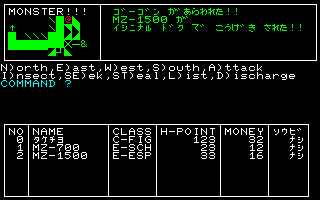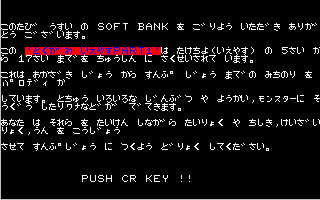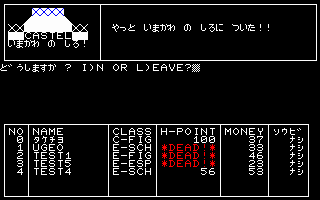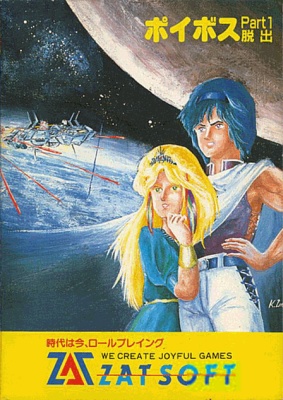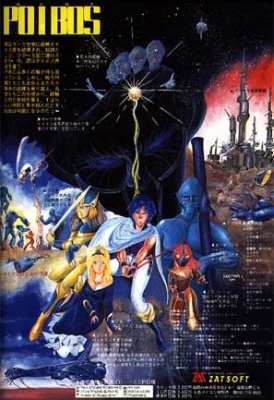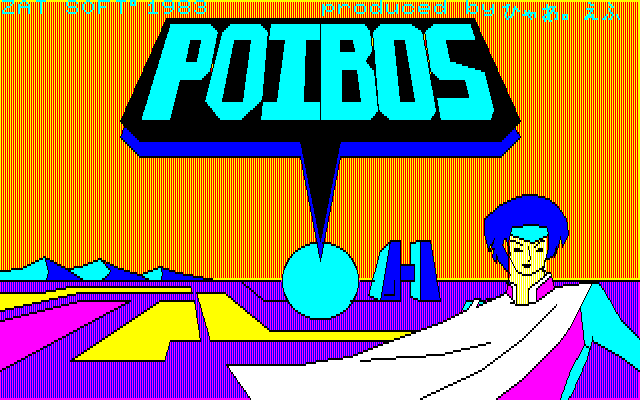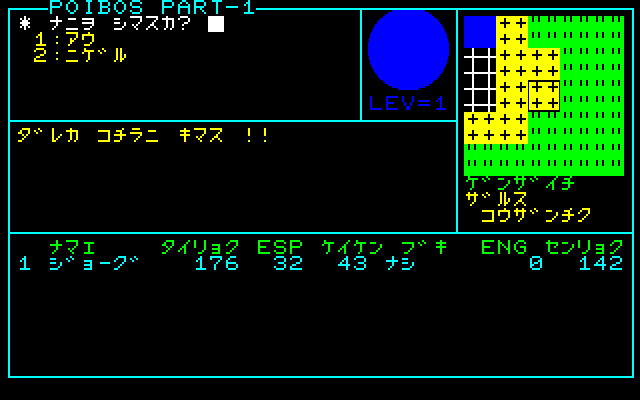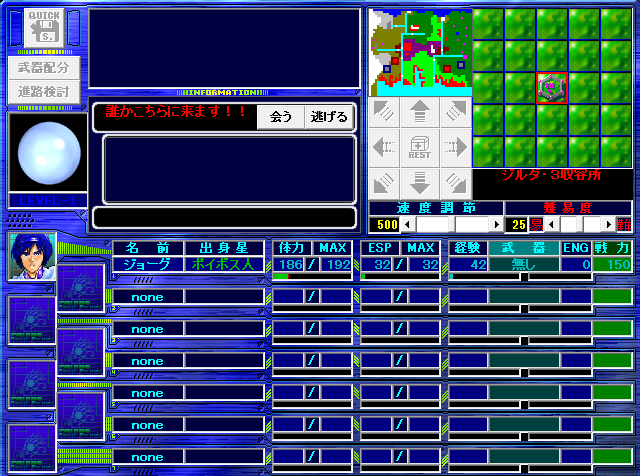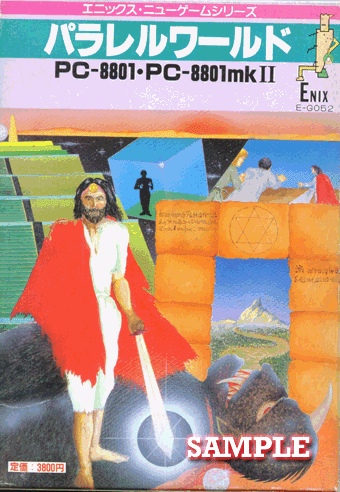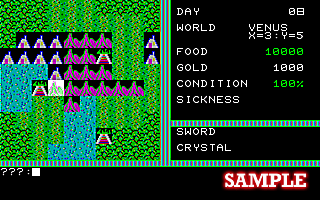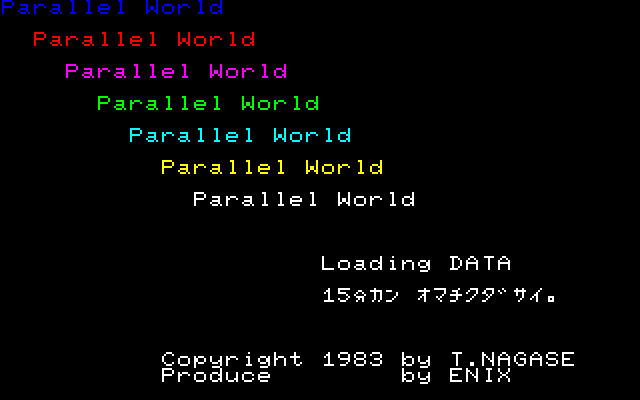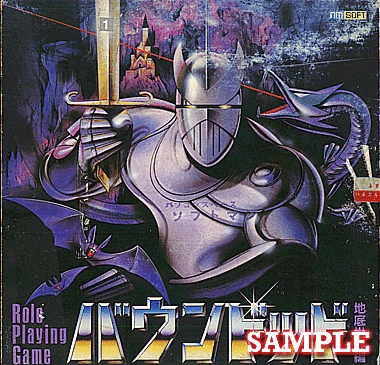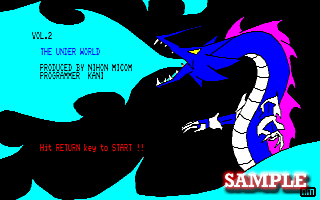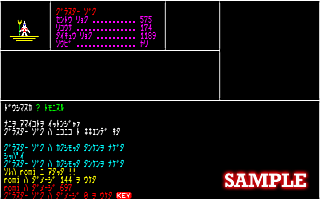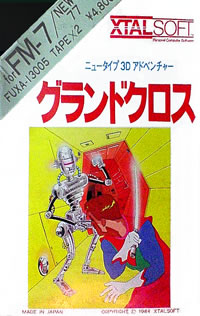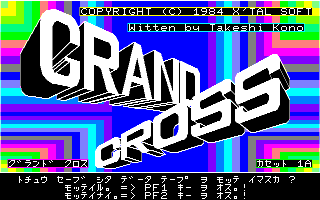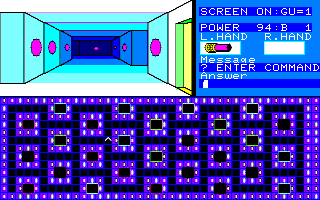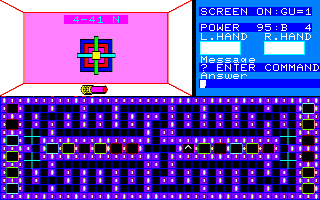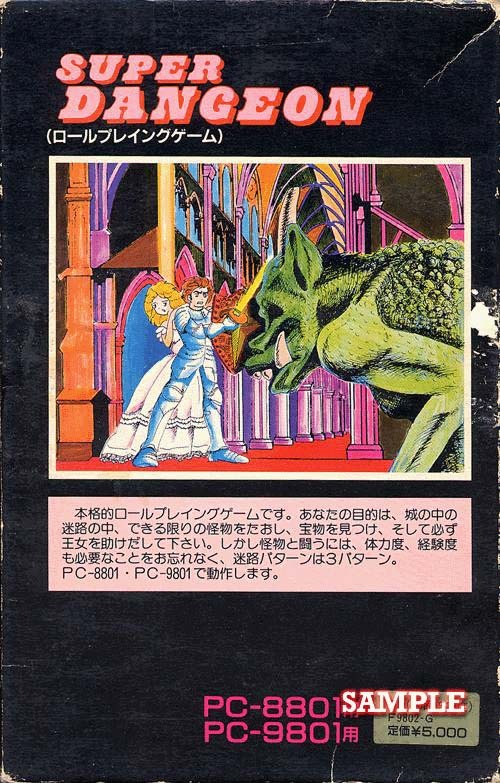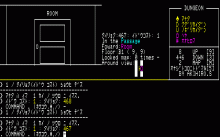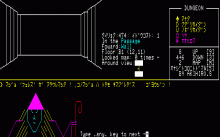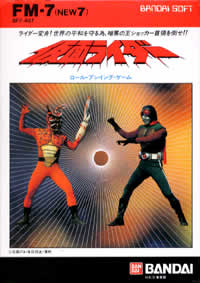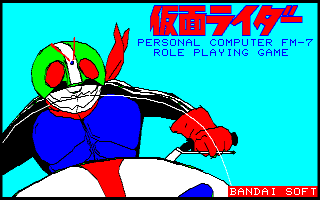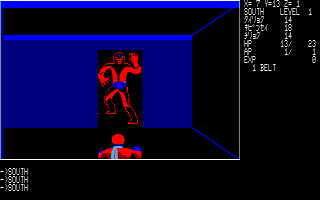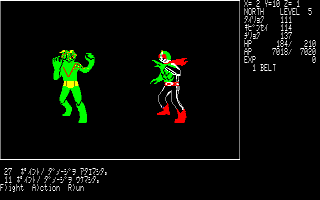Courageous Perseus (カレイジアスペルセウス) - PC-88, FM-7, X1, MSX (1984)
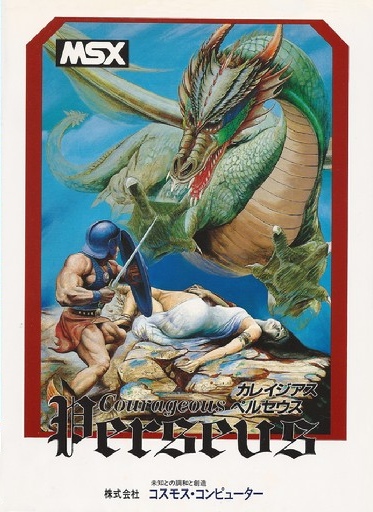
Hey, this is the first game in this series where I actually saw the end of it! Mostly because it has almost no text, and what little is there is in English, as this is the first Action RPG, actually one of the very first Action RPGs from Japan. If the usual Japanese databases are to be believed, it was released the same month as Dragon Slayer, and one month before Hydlide. While the other two have spawned successful series and became two of the most revered CRPG names in Japan, Courageous Perseus has been mostly forgotten. In its time, however, it seems to have been a pretty big deal, and publisher Cosmos Computer is said to have done a lot of marketing for the title. One of the staff members on Hydlide recalled how seeing an advertisement of Courageous Perseus had filled Hydlide designer Tokihiro Naitou with despair.
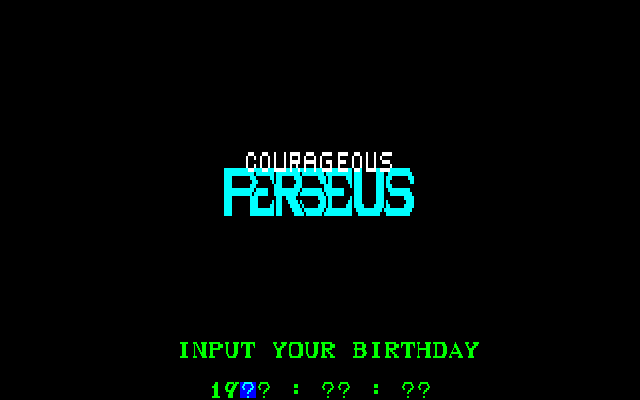
In a way, Courageous Perseus is more advanced than its two contemporaries, but ultimately it may well be the worst of the lot. It starts out promising enough: As Perseus you get to steer a raft to land on an island full of mythical beasts. The task is to slay the dragon and save the girl, of course. There's no character creation, but at the beginning, we get to put in our birthday, for whatever reason. If you were born after the year 2000, you're out of luck, though.
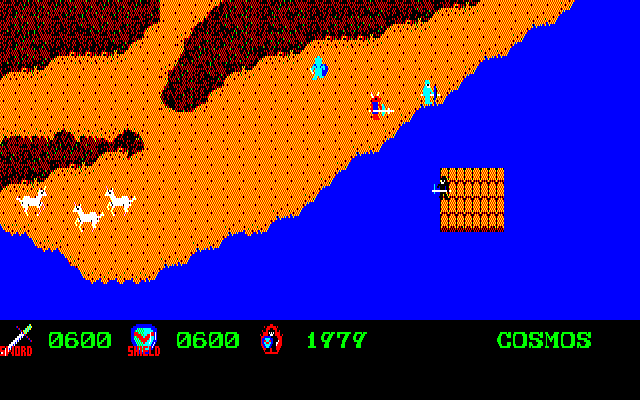
Perseus starts with 2000HP, but his health is constantly being drained one point per second. Enemies are attacked simply by bumping into them while holding the Space bar pressed. The problem: Almost all enemies are invincible to Perseus, at the beginning he can only kill the light blue soldiers and the unicorns. Every slain enemy raises his attack and defense values, though, and eventually gains the strength to try and kill a new enemy type. But the game never gives any hints as to which would be the next one, so it's all trial and error, often quite punishing as some enemies can consume hundreds of health points within seconds. Trying to find any rhyme or reason in the order, like determining which enemies "look" stronger, is futile. After the initial two, the next beatable enemies are the equally wimpy-looking Satyr, but after that come the Centaurs, which look more impressive than most of the others.
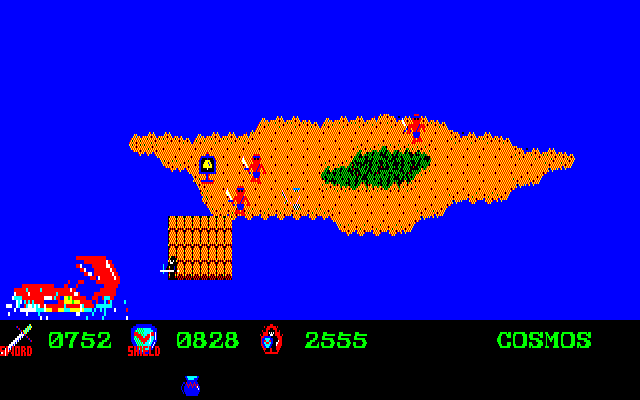
Really the only way to survive is to find all these bells, but it's not always easy. For some of them Perseus has to use his raft - there is a lake in the middle of the island with another one - to reach some smaller isles. But giant crabs jump out of the water, and if the raft happens to be above them, that means instant game over. It's possible to swim really far out into the ocean, but there's nothing but sea monsters there.
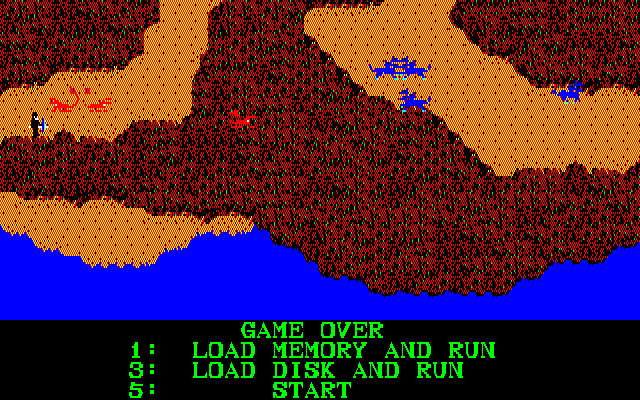
The island is filled with rocky mountains and thick woods that turn it into a maze, and the game is very good at showing you paths you cannot reach from your current location. Unfortunately, you usually have to drive your current target species near extinction before tackling the next one, which means a lot of confused backtracking over the island to find all of them. Enemies in general don't respawn, except some of them do. They're so few and it takes so long that it's not sustainable to try and grind for them, though. It's also kind of an eerie feeling to wander over the increasingly depopulated island. Makes you wonder if Perseus isn't the true villain here. Kinda surprising that he doesn't grow horns at the end.
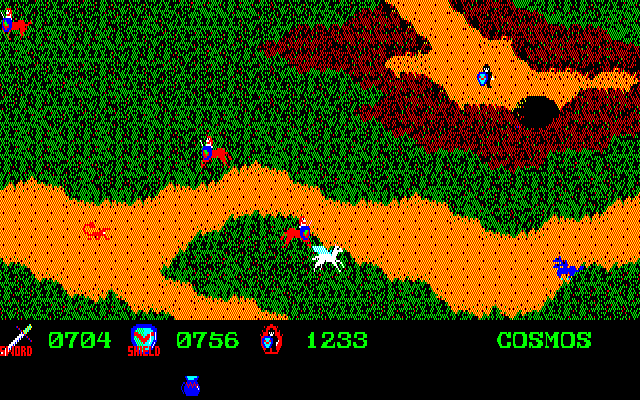
The caves make it possible to get around a bit faster, but where you come out is determined at random. You also have to leave the screen once before you can re-enter, putting you in danger from the nearby enemies.
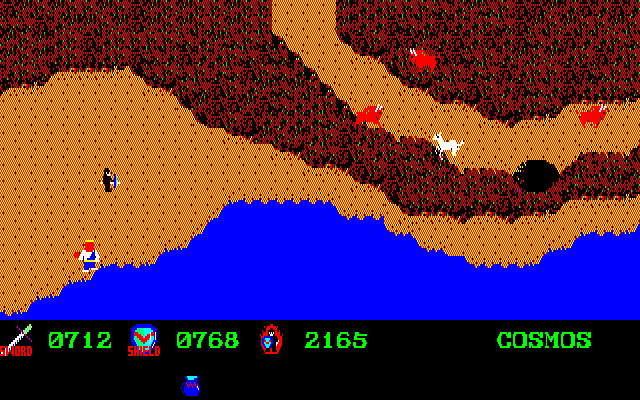
Monsters move around randomly and haphazardly, but are often positioned to block your way, so it's not unusual to lose a lot of health while trying to find the one available prey. Even after learning the order of enemies, I had to cheat for a refreshment of health to have a chance at survival.
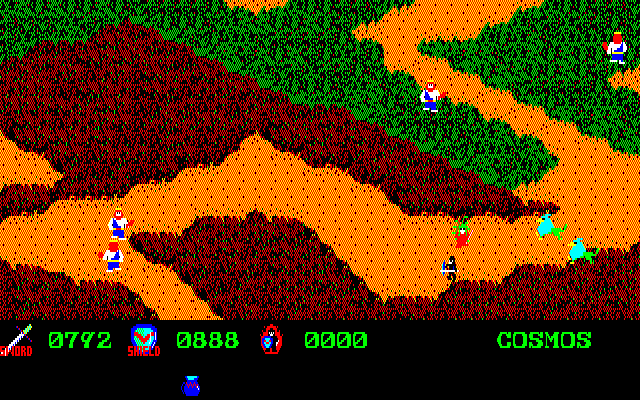
Since Perseus is most famous for slaying the Medusa, she's also in this game. Getting close to her is enough to drain your health, but once Perseus is strong enough, she is slain just like any other enemy.
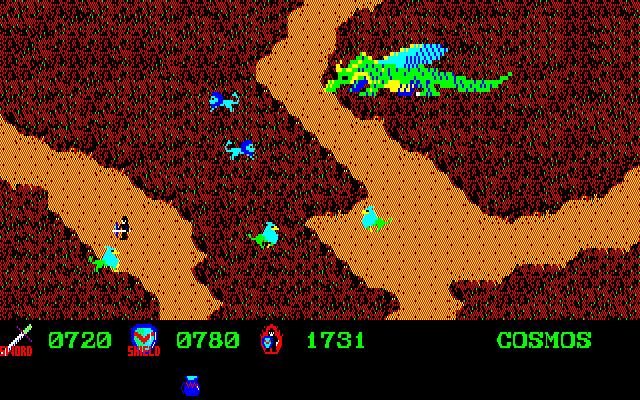
The dragon is actually the most peaceful creature on the entire island. It just sits on its mountain (odd, considering the "dragon" the mythical Perseus slew was a sea monster) and doesn't do Perseus any harm unless he attacks it first. It's invincible for most of the game, but in the end it goes down really fast.
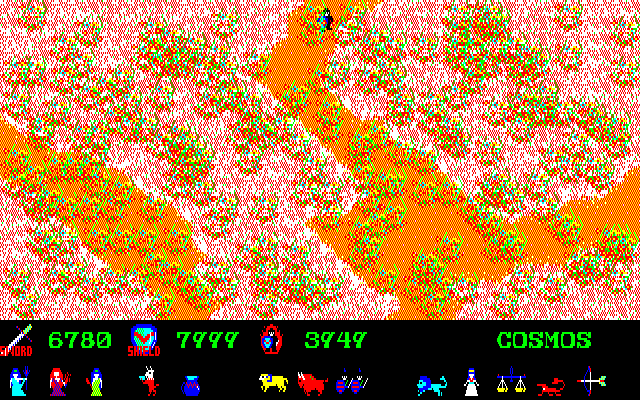
Most of the screenshots here are from very early in the game so you can see all the different monsters still alive, but Perseus actually gathers a lot of items on his quest. Some are just specimen of the different creatures, others like the jar and the bow look like tools, even though nothing can be done with them. (And a bow would have been so useful!) The trophies also include four women... well, it WAS the '80s.

All screenshots so far are from the PC-88 version. Most of the others look the same, except for the MSX, which is much more ugly:
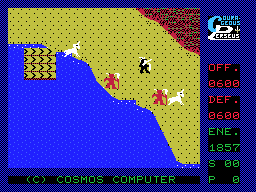
In case you want to have a shot at the game, but don't want any of that random guessing bullshit (only the endless backtracking bullshit and unfair enemies bullshit), here's the order in which the enemies become vulnerable to Perseus' attacks:
Light Blue Soldier
Unicorn
Satyr
Centaur
Devil Soldier
Scorpion
Pegasus
Bull
Blue Knight
Blue Cerberus
Manticore
Red Griffon
Cocatrice
Twin Soldiers
Red Warrior
Giant
Medusa
Dragon
Previous Episodes:
(1) The Dragon and Princess
(2) Some games we cannot play
(3) Danchizuma no Yuuwaku (NSFW)
(4) Ken to Mahou
(5) Dungeon
(6) Seiken Densetsu
(7) Panorama Toh
(8) Do Dutch Wives Dream of Electric Eels (NSFW)
(9) Some more games we cannot play

































